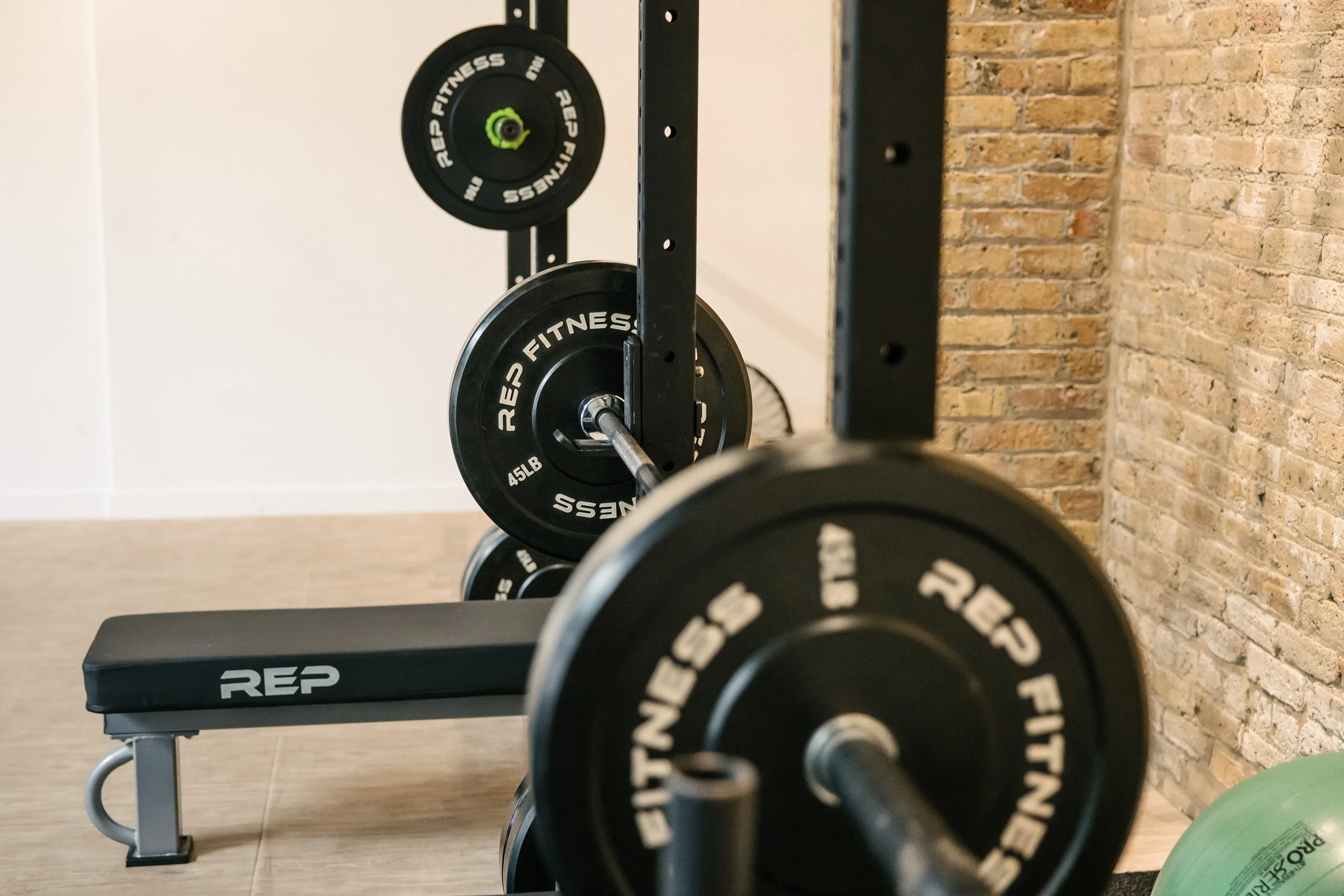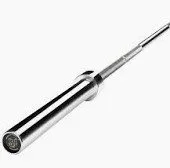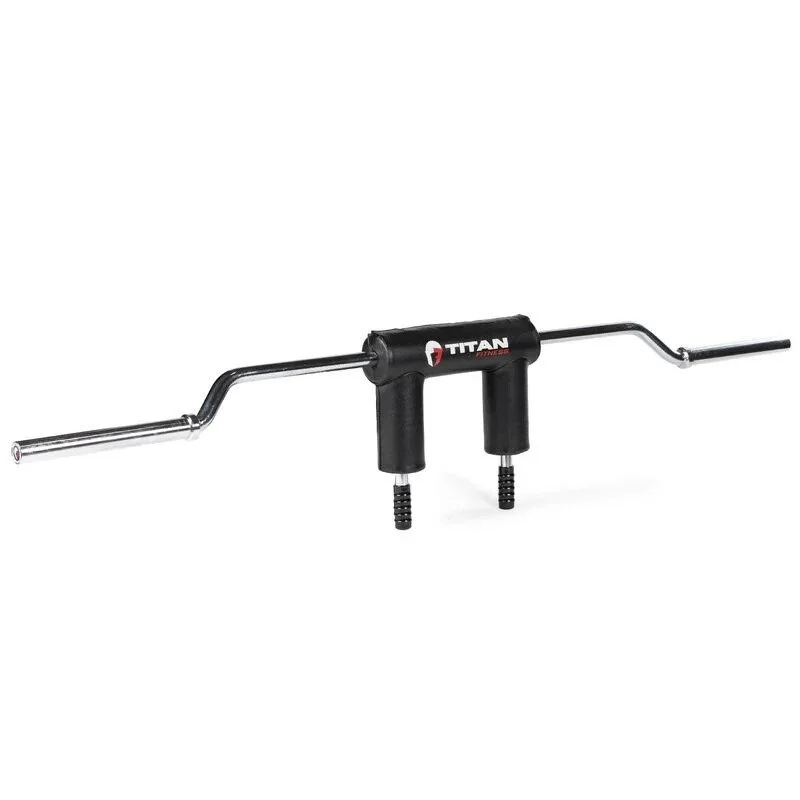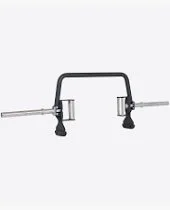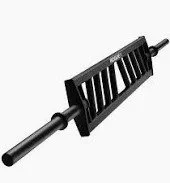The Ultimate Guide to Barbells
A standard barbell weighs 44 lbs or 20 kg. It forms the cornerstone of most effective strength training programs.
Photo Credit: Becca Heuer
INTRODUCTION
The barbell is a timeless tool for strength training. While there are many ways to get stronger, barbell lifting provides unmatched benefits.
A major one is versatility. You can use barbells for general fitness, athletic performance training, or even competition in a strength sport. Additionally, the challenging nature of barbells makes them an excellent mental training tool.
In this comprehensive guide, we'll delve deep into the world of barbells. We'll cover everything from barbell weight to the main differences based on sport. I'll also review popular brands with specialty barbell options.
How much does a barbell weigh?
A standard barbell weighs 44 pounds (20 kg).
Lighter barbells also exist and are most commonly used in rehabilitation or youth training. I frequently incorporate these into the first several sessions for new lifters who need extra focus on technique.
Companies also make women's bars, which is honestly a stupid name as they're a good option for anyone.
Heavier barbells used for specialized purposes can weigh up to 100 pounds (45.4 kg). Examples include safety squat bars or elephant bars in strongman competitions.
What are the main types of barbells?
Olympic barbells
Designed for the snatch and clean and jerk, the two Olympic weightlifting lifts
Olympic bars are typically 7 feet long (2.2 meters) with a standard 28mm diameter.
Needle-bearing or bushing systems in the sleeves for smooth, fast spinning.
Knurling (grip) patterns are less aggressive to accommodate quick hand transitions.
Powerlifting barbells
Usually referred to as power bars
Ideal for the squat, bench press, and deadlift, which are the powerlifting movements
Powerlifting bars are shorter at around 7.2 feet (2.2 meters) with a thicker 29mm diameter.
Bushing systems in the sleeves ensure stability during heavy lifts.
Aggressive knurling for maximum grip during static, heavy lifts and center knurling for extra stickiness on the squat
Multi-purpose Barbells
As the name states, these are excellent choices for people who favor a mix of lifting styles. They're also the primary choice for functional fitness or CrossFit. What they lack in sport-specific features, they make up for in flexibility. Multi-purpose bars usually split the difference with a 28.5 diameter and markings for Olympic and powerlifting.
The specifications matter much less since companies will make them useful for various needs.
What's the Best Barbell for Me?
The choice depends on your training goals. Here are a few considerations I usually see with my clients.
Additionally, if you are joining a commercial gym, you can follow the same advice as home gym owners in this guide. If you're lucky enough, you might have a local option that uses high-quality equipment.
I'm ready to specialize in a sport
A straightforward choice. Buy the most expensive bar you can afford if you intend to focus on either Olympic weightlifting or powerlifting. You must spend money to compete in any sport; your bar is your primary tool. Work with one similar to competition specifications for better sport transfer and more productive sessions.
Recommendations: Eleiko, Rogue Fitness, Texas Power Bar
Cost: $400-$1200
I like to train like a powerlifter, but I don't plan to compete
In this scenario, let your budget guide you more. You still want to avoid lower-tier bars as you will comprise basic benefits like knurling and longevity. And a quality bar feels better moving heavy weight.
But many solid bars work well for the bench, deadlift, and squat.
Recommendations: Rogue Fitness, Texas Power Bar, Rep Fitness, American Barbell
Cost: $300-$600
I'm new to lifting and want to explore different styles, or I compete in non-strength sports
Pick yourself a solid multi-purpose bar. You can purchase a more specialized bar later while turning your original into a beater option. I like to use older bars for landmine movements in which the bar experiences more wear.
Recommendations: Rogue Fitness, Rep Fitness, Titan Fitness, Bells of Steel
Cost: $200-$400
Seriously, though, I'm on a strict budget
By all means, get creative if cost presents a barrier. In training, doing something is always preferable to doing nothing.
Recommendations: CAP Fitness or Facebook marketplace. (Note that high-quality strength training equipment is rarely discounted much on the secondary market).
Cost: $150-$175
What about Weight Plates?
The same scenarios apply to weight plates. If you have more serious ambitions, buy calibrated plates. You'll appreciate accuracy when attempting a meet PR. Otherwise, they are a pretty standard commodity with decent offerings from smaller players like TruGrit and Giant Lifting.
Specialty Barbell Options
If you have room in your budget and your training needs to advance, specialty barbells provide great value. They typically offer a few different benefits. These include unique grips and ranges of motion that can target specific muscle groups or provide joint relief.
Here are the main options I've found most helpful to clients as they progress.
Deadlift Bar
If you're advancing as a powerlifter, a dedicated deadlift bar is a solid addition to your training program. Ideally, you will pick up the same deadlift bar your preferred federation uses.
There are a few main distinct features of this bar:
Enhanced grip via aggressive knurling
No center knurl.
Different dimensions - a diameter of 27 mm and a length of 7.5 feet
Slightly different construction with a "springier" steel
These traits translate to stronger lifts. The smaller diameter and rougher knurling provide a better grip, while the different material leads to more whip. You can bend the bar during the setup, leading to extra tension and faster movement off the ground.
Recommendations: Kabuki, Rep Fitness, Rogue Fitness, Texas Power Bars
Safety Squat Bar
The safety squat bar offers a few great features. The bar weighs between 60 and 70 pounds, depending on the brand.
The padded bar and long handles significantly relieve the shoulders and elbows. I've directed clients to use the SSB bar when rehabbing upper body injuries like elbow tendinopathy. It can also be an excellent way to reduce shoulder fatigue while maintaining specificity and intensity.
The weight distribution forces a more upright stance, increasing the demand on the quads. While some lifters favor a hip-dominant squat, developing extra quad muscle and strength can aid in training.
Recommendations: Rep Fitness,Titan Fitness
Trap Bar
Also known as a hex bar, the trap bar provides an excellent option for new lifters and athletes. The raised handles and more open angles of the chest and hips make it easier to find the starting position. There's also evidence from this paper and others that the trap bar is superior for maximal force, power, and velocity.
Recommendations: Titan Fitness, Rep Fitness
open Trap Bar
An upgrade over a regular trap bar due to its built-in deadlift jacks and self-stabilization, plus additional movements including lunges and overhead presses.
Recommendations: Giant Lifting, Kabuki, Rep Fitness
Multi-Grip Bar
Sometimes referred to as football or Swiss bars, these feature multiple grip angles. Switching hand positions hits muscle groups differently.
In addition, the neutral grip option is ideal if you're experiencing shoulder or elbow discomfort. My three favorites to assign to clients are the inverted barbell row, bench press, and overhead press using a neutral grip. These are most helpful during high-intensity cycles on the core lifts and a decent amount of arm work.
Recommendations: Rep Fitness, Kabuki
Transformer Bar
An ultra-premium pick for one of the best designs on the market. Kabuki built this patented piece of equipment to function as an adjustable barbell. It replicates many core movements through different settings, offering incredible versatility in a home gym.
Curl Bar
While the least essential specialty bar, it does offer a valuable stimulus for arm training. The curved shaft allows for greater extension of the biceps and triceps with less on the wrists. I recommend buying the rackable version as it makes loading infinitely easier.
Recommendations: Titan, Bells of Steel
Popular Barbell Brands
Now that you understand the differences and some of the main recommendations, let's dive into the abovementioned companies.
Eleiko: Swedish company is top-of-the-line, like the Bentley of strength equipment. Most federations use Eleiko bars in international weightlifting competitions. This is your choice if you're the type to buy one exceptional product for the rest of your life.
Rogue Fitness: Over the last 20 years, this company has brought high-quality strength equipment to the mainstream. They enjoy a passionate customer base with barbells as their signature product. Rogue Power Bars are commonplace in any respectable gym in the U.S.
Texas Power Bars: A classic choice for powerlifting enthusiasts. Many powerlifting federations and top-notch barbell gyms rely on their products.
American Barbell: Arguably the closest to Eleiko in overall bar quality. They're an excellent choice for serious lifters with a keen eye for performance and detail.
Rep Fitness: A fast-growing company that recently redesigned its line of barbells. They started as a value player in the home gym market but recently turned to producing innovative products. Their slowly creeping price points reflect this focus on quality and a desire to compete directly with Rogue.
Bells of Steel: Potentially the best value player for price-sensitive buyers seeking a reputable brand. They offer a solid multi-purpose barbell for $199, along with good tools for general fitness enthusiasts.
Titan Fitness: Very similar to Bells of Steel. The main difference is that they have a couple signature products, including their Safety Squat Bar.
CAP Barbell: The most popular cheap option. You will get what you pay for, but the fact is that they make an accessible barbell. This is a viable choice to test whether a home gym works for you.
Conclusion
Barbells occupy a unique space in fitness. Their uses range from training for general health to competing at the international level. Clarifying your goals will set you up to find the barbells for your specific needs. While I've intended this guide for general information and home gym enthusiasts, consider looking for commercial gyms using quality equipment.


